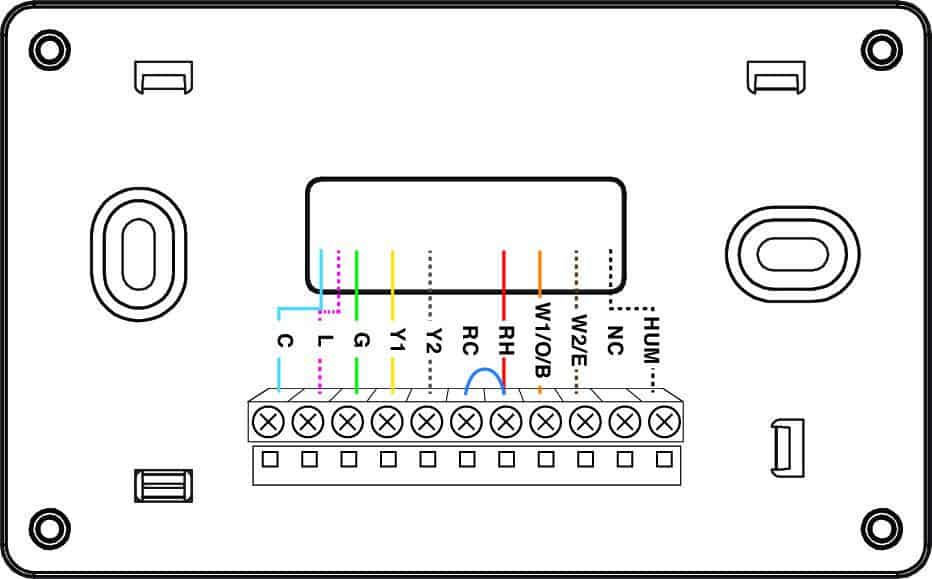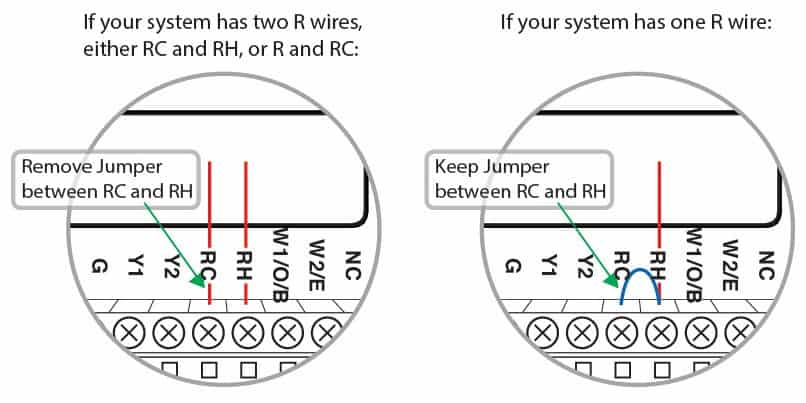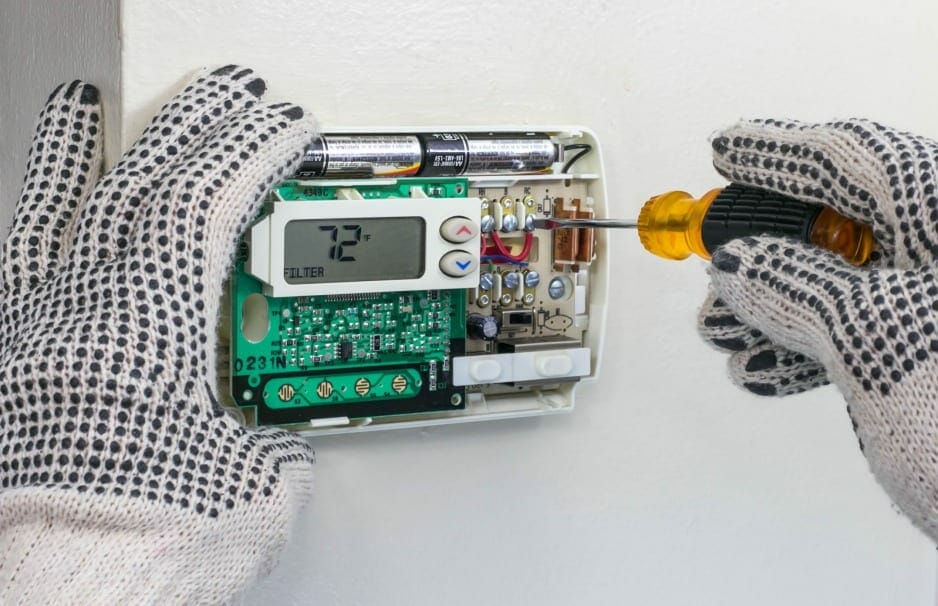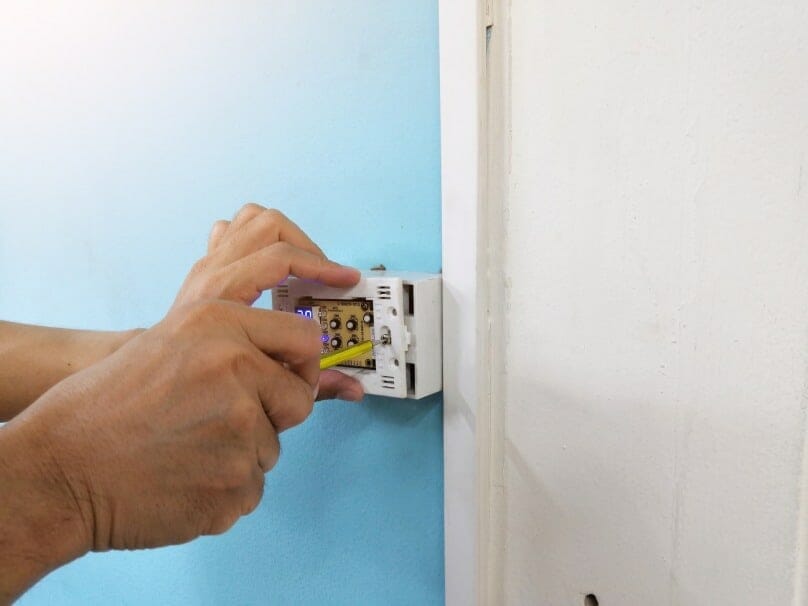Many people are familiar with a thermostat simply because these things regulate their appliances’ temperature (either hot or cold). Common appliances with thermostat readings are refrigerators, air conditioning units, heaters, and other heating or cooling devices. Thermostats are quite crucial in keeping your appliances running, but are you familiar with the wires that make them work?
The RH and the RC wires are found in every thermostat. If you need to change the wires, basic knowledge will be very helpful. Here’s the difference between the two.
Table Of Contents
Why Are Thermostat Wirings Important?
If you aren’t a mechanic, why do you need to know about wirings? Face it, there will be times that your appliances will break down and there won’t be any available mechanic. During times like this, it’s helpful to know a bit about these wires to understand where the problem is.
In a heating or cooling unit, a thermostat is powered by a heating and cooling system. These systems work together to regulate the desired temperature inside the unit. The cooling system will automatically turn on when the temperature increases. The same goes for the opposite.
Related: How Does Nest Thermostat Save Money? (Simple Answer!)
What are RH and RC?
If you’re worried that this is too technical, don’t be. The RH and the RC wires are pretty easy to understand because they’re straightforward.
The RH wire refers to “red heating” which means that this is the connection you need to power the heating system of your air conditioning unit. Yes, even your air conditioning unit has a heating system to keep the temperature balanced. While the ‘red’ term is universally used to signify a live electrical wire, it isn’t dangerous and doesn’t need to be red.
Related: How to Wire GFCI Outlet? Diagram & Step-By-Step Instructions
It only utilizes 24 volts which isn’t enough to shock you. To add to that, the wire is not always red. There is no standard for the color of the RH wire, but most units use a red one.
On the other hand, the RC wire refers to “red cooling.” It’s the same with the RH wire, which powers the thermostat. For the RC, it powers the cooling system.
Related: Honeywell Thermostat Not Working – Reasons & Solutions
How Do the RH and the RC Work?
The thermostat you see on your air conditioning unit is wired to a furnace. This furnace houses the heating and cooling systems. Specific wires connect the thermostat and the heater to operate those systems. This is where you’ll see the RH and the RC wires.
Usually, these wires are powered with 24 volts. Even though you won’t get any electric shock from operating them, you should always make it a habit to turn off the unit before working or replacing the wires.
Some units don’t have an RH wire, but instead, they have an R wire. An R wire is similar to either the RC or the RH, so if you don’t have an RH wire, the R wire will be in place to control the heating system.
Related: Honeywell Home T9 Vs. Nest Vs. ecobee 4 Smart Thermostats
Other Relevant Wires You Need to Know
Aside from the RH and the RC wires, there are other wires that you will find in your cooling or heating system. Here are some of the most standard cables and what they signify.
Related: Nest Thermostat Delayed – What Is It? How to Control it?
1. G
The G wire is probably the safest wire in the unit. It’s not a live wire, but it does operate the blower fan. The blower fan pushes the warm or cool air outside the vent, so without the G wire, there won’t be any air going out of your unit.
2. C
The C wire is not always present in every unit. Some units can work without it because they get power from existing wires. The C wire’s primary purpose is to give power to operate the thermostat. No, they’re not like the RH and RC wires because these two power the systems and not the thermostat. If your unit doesn’t have any, this is nothing to be worried about.
3. Y/Y1/Y2
Wires with ‘Y’ in them pertain to wires connecting to the cooling system. They’re the ones responsible for increasing the air that is being pushed out. Some units have one Y wire, while some have two; hence, the Y1 and Y2 codes.
4. W/W1/W2
Similar to the Y wires, the W wires are the ones responsible for the heating system. If your thermostat is too cold and you wish to lower it, these W wires are the ones that signal the heating mechanism. They can also be found in two’s or single wires.
5. E
Wire E is found in heat pumps, usually activated when the surroundings are too cold. Let’s say your room is cold because of the winter, and you want to fire up the heater. If your heating unit doesn’t have an auxiliary heat pump, then the E wire increases the heat. Ideally, you don’t have to use this emergency heat pump if your heating system works well.
6. L
The L terminal is more of a port than an actual wire. This terminal is used for the indicator lights you see on the thermostat. This terminal will light up if your heating or cooling system has a problem.
7. X
And then you have the X wire. The X wire stands for auxiliary heat, which was already mentioned a while ago. Not all units have auxiliary heat pumps, but that shouldn’t be a problem. Just like the E wire, auxiliary heat pumps give additional heating whenever the system cannot keep up with the cold surroundings outside.
And there you have it! While these wires can be slightly confusing initially, you’ll get the hang of it the more you tinker with your cooling system. You must consult the manual and wire instructions if it’s still confusing.






1 comment
There is an error in your discussion regarding the G fan wire. The fan turns on automatically when the furnace gets hot. The fan turns on automatically in the furnace during heating. During AC use the fan turns on requiring the G line.
Therefor you can use the G wire as s substitute for a common wire, but the g wire goes to common in the furnace and thermostat, and a jumper from Y to the furnace G terminal needs to be installed so the fan runs when the AC is triggered with the Y wire.
Comments are closed.